 |
 |
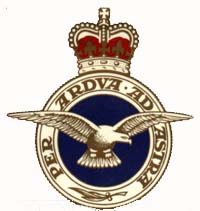
|
The history of flying in East Anglia by no means began with the arrival of the United States Army Air Force in 1943 although it is certainly the sight of waves of Flying Fortresses which stick most in local memories.
Bury had certainly had some early experiences of air power as it was attacked by Zeppelins in the First World War. A vacant lot remained on the Cornhill until the 1950's where such a bomb had fallen.
Balloon ascents took place in Bury in the 1700's and powered flights were later often associated with army camps. The Suffolk Aero Club formed in 1925, Ipswich airfield opened in 1930 and in 1938 the West Suffolk Aero Club opened an airfield at Westley which flew Taylorcraft monoplanes during peace and war. The most important airfield was Marshall's Flying School at Cambridge which opened in 1929.
In 1934 the Macrobertson Race had 64 entries to fly from Mildenhall to Melbourne and even Amy Johnson was there. In 1935 the spectacular Jubilee Air Review took place, also at Mildenhall.
It was 1934 in which a major expansion of the role and size of the Royal Air Force was begun. In that year the whole of East Anglia had only four active military airfields, but Mildenhall was the first of many more. As Germany became seen as the threat the heavy bombers were to be based in Yorkshire, the closest location to Germany, East Anglia was to hold medium bombers, and light bombers would be based in France. So Heyfords were based locally, and Wellingtons arrived from November 1938 to join 3 Group. Throughout the war and into the 1960's 3 Group controlled the medium and heavy bomber sites in East Anglia, such as Marham, Stradishall, Mildenhall and Honington.
In the west and central parts of East Anglia the light Blenheim bombers of 2 Group were housed at Watton, Wattisham, Wyton and West Raynham. | ||||||||||||||||||||||||||||||
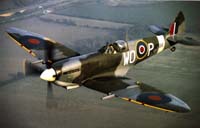
|
The only pre-war fighter station built in this expansion period was Debden in 1937. Along with Duxford, which dated from post World War I, these shorter grass fields could take Spitfires and Hurricanes. The Second World War started in September 1939, with only 15 active military airfields (and five satellites) in East Anglia. By May 1945 there were 107, the first major addition in wartime being Coltishall in June 1940. During the Battle of Britain the East Anglia involvement was mainly the assembly of 12 Group's Big Wing assembling every day at Duxford. The Wellingtons attacked Germany industry, and the Blenheims attacked Belgian and French targets. The winter of 1940/41 showed that hardstandings were necessary to replace the grass fields and dispersals, and Nissen huts appeared at this time. Not until March 1941 was the first concrete runway airfield opened at Waterbeach. By late 1942 the building programme got into full swing, especially since the Americans began to arrive. In those days there was no mains water or electricity in much of the countryside and the roads were not suitable for heavy traffic, so the impact of these works and the people who subsequently used them was tremendous. Listed below is a table of RAF stations in and around our area, and additional information is available by clicking on the appropriate name. RAF Stations in and around St Edmundsbury
The RAF Stations in and around St Edmundsbury | ||||||||||||||||||||||||||||||
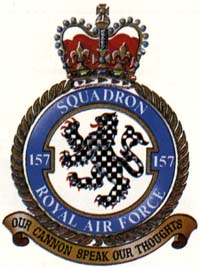
|
Castle Camps and the Mosquito Squadrons This airfield was started in September 1939 and opened as a Debden satellite in June 1940. 85 Squadron and 111 Squadron had short periods here. The Number 73 Squadron flew Hurricanes from here in September but they only had tents to live in, and left in November 1940 to convert to night flying. Castle Camps was exposed and windy and in 1941 some better facilities and operating runways were built. In 1942 the Mosquitos started to assemble here in great secrecy for test flying with 157 Squadron until replaced in March 1943 by Number 605 Mosquito Squadron. In July 1943 Castle Camps became a satellite of North Weald and the Mosquito began to be used for intruder operations, and then they developed it for bomber support operations. Mosquitos left Castle Camps in October 1943. 527 Radar Calibration Squadron replaced them until February 1944 when Spitfires arrived, then Typhoons, then Tempests, all leaving quickly. The Canadian 410 Squadron again flew Mosquitos from Castle Camps until April 1944. In July to October 1944 68 Squadron's Mosquitos also arrived, also 151 and 25 Squadron. In 1945 307 and 85 Squadrons flew from here, also in Mosquitos and the station closed in January 1946.
| ||||||||||||||||||||||||||||||
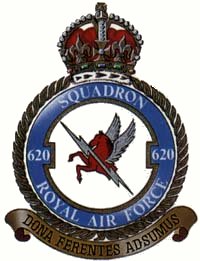
|
Chedburgh and the Polish Squadrons Chedburgh opened in September 1942 as a second satellite for Stradishall and 214 Squadron arrived in October and flew the Short Stirling bomber until late 1943. Part of the 214 Squadron was split off as a nucleus for the new 620 Squadron in Summer 1943. They moved to Leicester East in November 1943 when 1653 Conversion Unit formed to become a Stirling training unit at Chedburgh. 1653 Conversion Unit stayed until December 1944 when they left for North Luffenham. It was replaced by 218 Squadron in that month flying Lancasters as part of 3 Group's bomber offensive. They also dropped food in the relief of Holland but disbanded in August 1945. In September 1945 Polish Squadrons 301 and 304 arrived with Warwicks and some Wellingtons flying transports, mainly to the Middle East. Halifaxs arrived in 1946 for 301 and 304 and were used on trunk routes overseas until December 1946. The site was sold in 1952 and is now a light industrial estate where use can be made of buildings and hardstandings. The remainder is agricultural once again.
"I was stationed at Feltwell, but felt bloody awful" was the memory of many RAF families over the years. | ||||||||||||||||||||||||||||||
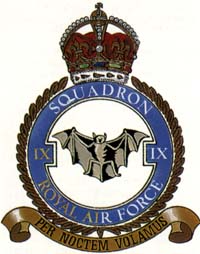
|
RAF Honington RAF Honington was started in 1935 and opened in 1937 in 3 Group with 77 Squadron Audaxes and Wellesleys and 102 Squadrons Heyfords. Number 75 Squadron came in 1938 with Harrows and converted to Wellingtons but moved to Stradishall in July 1939. It was replaced by Number 9 Squadron who stayed until September 1942 flying Wellingtons. Four of these were lost in the attack on the German fleet of 18th December 1939. In April 1940 they flew to Lossiemouth for two weeks operations over Scandinavia and on return continued to fly maritime sorties to Norway until May. In Summer 1940 the Wellingtons attacked German industrial targets by night. On their return from France in June 1940 the survivors of 103 and 105 Squadrons gathered here. In July until September a Czech Squadron was formed, Number 311 who moved to the satellite at East Wretham. In December 1940 9 Squadron attacked Venice and in January 1941 Turin. In March 1941 they received two Wellington II's, able to carry 4,000 lb bombs. In September they started to fly Wellington IIIs. In March 1942 heavy attacks were made on Essen, Lubeck and Rostock. 14 planes from Honington joined the 1,000 bomber raids on Cologne, then Essen and Bremen in June. In August 1942 Number 9 Squadron moved to Waddington and in September 1942 the USAAF took over Honington as a depot for B-17 repairs. The 364th fighter group flew P-38Js in February 1944 and converted to P-51D's in July 1944. On 26th February 1946, the base returned to the RAF when Transport Command flew Dakotas until 1949 when Bomber Command took over. From 1950 to 1956 94 Maintenance Unit was here and the long runway was built to replace the 1943 metal runway. | ||||||||||||||||||||||||||||||

|
In 1955 Canberra bombers of XV, 44 and 57 Squadrons arrived. In 1956 these units bombed Egypt in the Suez crisis and in November 1956 7 Squadron flew Valiants from here, and in 1957 90 Squadron reformed with Valiants. As Honington became an important V-bomber base they were joined by 199 Squadron with more Valiants and Canberras equipped for electronic warfare. On Saturday 20th September, 1958, RAF Honington opened its gates to the public, by holding an "At Home" air show and static displays. It was described as coming, "on the 18th anniversary of the Battle of Britain". The Station Commander, Group Captain A D Frank, DSO, DFC, wrote, "At Honington you will see something of the organisation needed to keep three Squadrons of Valiant bombers in fighting trim. These fine aircraft are the successors of the Wellingtons and Lancasters of the last war. Flying faster, higher and further than was dreamt of then, they have the terrible hitting power conferred by nuclear weapons. It is our hope and belief that mere possession of this power will render unnecessary any future Battles of Britain." The Valiant, Victor and Vulcan bombers could all be seen, with others, in a static display at the Open Day. Flying displays featured throughout the afternoon. You can read the whole programme for this event here: Numbers 55 and 57 Squadrons formed after 1959 to fly the newer Victors, but left for Marham in 1966. | ||||||||||||||||||||||||||||||
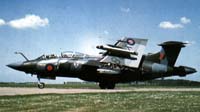
|
From 1965 to 1969 the base was updated to fly the Buccaneer attack Squadrons of Strike Command with 12 Squadron and the Navy's 809 Squadron. In 1974 208 Squadron was also formed to fly Buccaneers. Martel missiles were also based here in the late 70's and 809 Squadron left in 1978. RAF Honington received the Freedom of the Borough of Bury St Edmunds in 1972 recognising and fostering the close associations with the town since 1937 which had been first recognised when the town "adopted" the station in 1947. Honington went on to become home for Tornadoes in the early 1980's until they moved to Marham. In 1994 the RAF Regiment took up residence at Honington. Their battle role is to secure forward bases which can then be used by aircraft and to provide the necessary defence and security once acquired. Later they became home to the specialist chemical and biological warfare unit, for defence against such attacks.
| ||||||||||||||||||||||||||||||
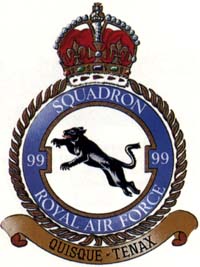
|
Newmarket Heath The Rowley Mile end of Newmarket Heath was once used for flying the aristocracy in on race days long before the war. The Prince of Wales landed here on the way to the Jubilee Review at Mildenhall in 1935. In 1939 it was taken over by Wellingtons of 99 Squadron from Mildenhall and the Grandstand was used for their accommodation. Twelve of these planes attacked the Germany fleet off Heligoland in December 1939 and six were destroyed by enemy fighter action. This action helped Bomber Command to decide against daylight attacks and so future work was done at night. In February 1941 the White Hart Hotel and much other Newmarket High Street property was destroyed by bombing from a Dornier. Number 99 Squadron moved to Waterbeach and Stirlings of 7 Squadron had a brief stay and Wellingtons of Number 3 Group Flight arrived in May 1941, with Wellingtons of 75 Squadron later. In these early days the 3,000 yard grass runway was the longest in the country. Whitleys and Lysanders flew clandestine operations from here as well, but a tank carrying glider was also tested here because of the long runways. In late 1942 Stirlings replaced the Wellingtons, and in December 1942 Newmarket became part of 31 Base. In great secrecy a jet powered Gloster F9/40 was assembled here for flight trials, and in September 1943 more secret trials of radio and radar bombing aids were begun by the Bombing Development Unit until 1945. Also in June 1943 the Gunnery Training Flight arrived and later became 1688 Bomber Defence Training Flight. The RAF left in Summer 1945 but after 1946 light aircraft continued to deliver people to the races at this airstrip. | ||||||||||||||||||||||||||||||
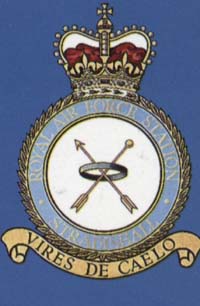
|
Stradishall Stradishall was an active station for over 30 years, opening in February 1938 as part of 3 Group. It was first occupied by 9 Squadron with Heyfords and 148 Squadron with Wellesleys, although the latter were soon replaced by Heyfords and Ansons. In September 1938 the Munich crisis had Stradishall on full alert and its tentative target, in case of war, was Berlin. In early 1939 9 Squadron left to be replaced by the Wellingtons and Ansons of 75 Squadron, but Stradishall was vacant, when these moved on, from September to October 1939. After a brief period of Blenheim 1F fighters, Wellington bombers returned in February 1940 with 214 Squadron, the Federated Malay States Squadron, who stayed until October 1942. One of the hangers suffered enemy bomb damage in early 1941. Number 138 Squadron flew many sorties from November 1941 to March 1942 with Whitley bombers. In April 1942 214 Squadron converted to Stirlings and 109 Squadron arrived in Wellingtons, then Oxfords of 1521 BAT Flight. In May 1943 Stradishall controlled Ridgewell and Chedburgh but in December 1944 186 Squadron arrived from Tuddenham with Lancasters and operated until they disbanded in July 1945. After the war Stradishall left 3 Group and passed to 48 Group Transport Command and in August 1945 Number 51 and 158 Squadrons arrived in Stirling CV's and these flew until March 1946 when 51 Squadron received Yorks. In September 1946 Stradishall reverted to 3 Group and five squadrons of Lancasters were based here until February 1949. | ||||||||||||||||||||||||||||||
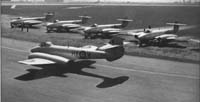
|
In July 1949 Stradishall became Number 203 Advanced Flying School for Meteors, a few Spitfires, Vampires and Harvards into the 1950's. Number 203 became redesignated 226 Operational Conversion Unit but continued to fly many types of aircraft until 1955. From 1955 to 1957 Number 125 Squadron flew Meteor NF11's and Venom NF3's with 263 Squadron joining in 1957 to 1958. | ||||||||||||||||||||||||||||||
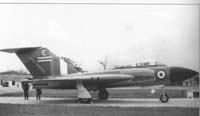
|
Javelin 2's and 6's were flown by 89 and 85 Squadron up to 1959. In 1958 Hunter 6's arrived with Number 1 and Number 54 Squadron and these planes stayed until 1961. In December 1961 Stradishall became a Training Command with Number 1 Air Navigation School with Varsities and Meteors, then Dominies until August 1970. Stradishall then attained some fame as a transit camp for Ugandan Asians expelled by Idi Amin. In July 1977 Stradishall became Highpoint Prison and it has been extended and improved as a prison ever since. The "Hard Times" café stands outside the prison gates today, on the road from Bury St Edmunds to Haverhill. Westley was built with two small hangars in 1938 as home for the West Suffolk Aero Club with its two Taylorcraft Plus C monoplanes. It was too small to be taken over by RAF Volunteer Reserve so private flying was allowed until the war, when it closed. However, because of the Gibraltar Barracks and Blenheim Camp in Bury, 241 Squadron flew Lysanders here from April to July 1941, to help the army and watch the east coast for any invaders. The Army Cooperation Command felt that Lysanders were too slow and vulnerable and acquired American Curtiss Tomahawks, but the runway at Westley was not long enough for these, so 241 left for Snailwell. In August 1942 652 AOP Squadron arrived with Tiger Moths and Austers and training was carried out here in 1943. Auster Squadrons used Westley for training until September 1944. Today, Westley aerodrome is a housing estate, part of Bury St Edmunds urban growth. | ||||||||||||||||||||||||||||||
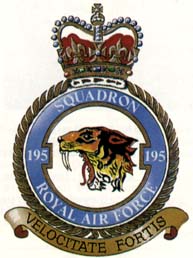
|
Wratting Common (or West Wickham) This aerodrome opened in May 1943 as West Wickham, when 90 Squadron moved here from Ridgewell to fly Stirlings. In June their targets were Krefeld, Mulheim and Wuppertal, with raids on Hamburg in July and 15 planes went on the Peenemunde raid. In August they attacked Turin twice but the station's name had caused some confusion so it was renamed Wratting Common on 21st August 1943. In October, 90 Squadron moved to Tuddenham so that in November Number 1651 Conversion Unit could vacate Waterbeach to train new Stirling pilots at Wratting. This continued until November 1944. Number 195 Squadron arrived in October 1944 for concentrated attacks on oil targets in Lancasters. They also attacked Dresden, and finally Bad Oldesloe in April 1945. Number 195 then did eight supply drops to the Dutch and POW repatriation missions before disbanding on 14th August 1945. Wratting Common continued as support for Stradishall, then as a camp for displaced persons. Today it is agricultural land, part of the Vestey estates.
|
| Go to Military Homepage | Updated 4th September 2004, and 22nd January, 2015 | Go to Main Home Page |